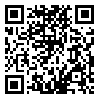Volume 9, Issue 6 (Nov & Dec 2019)
J Research Health 2019, 9(6): 463-470 |
Back to browse issues page
1- Department of Psychology, Faculty of Education Sciences and Psychology, Ferdowsi University of Mashhad, Mashhad, Iran
2- Department of Psychology, Faculty of Education Sciences and Psychology, Ferdowsi University of Mashhad, Mashhad, Iran , mashhadi@um.ac.ir
2- Department of Psychology, Faculty of Education Sciences and Psychology, Ferdowsi University of Mashhad, Mashhad, Iran , mashhadi@um.ac.ir
Abstract: (2263 Views)
Interest in the use of mindfulness-based activities with youth is growing. Students with externalized disorders often have problems with mindfulness and attention activities. The relationship between mindfulness and externalizing problems in children and adolescents has important therapeutic implications. This study was designed to investigate the predictive role of mindfulness in externalizing disorders among adolescents. In this study, 250 high school students were selected. In order to measure the mindfulness characteristics, mindfulness attention awareness scale brown & ryan and to measure externalizing disorders, youth self-report of Achenbach's self-report form were used was. There was a significant inverse relationship between score of mindfulness and total score of externalizing problems. In addition, there was a significant inverse relationship between mindfulness and components related to externalizing problems (lawlessness, aggression, problems with attention deficit/ hyperactivity, oppositional defiant disorder issues and problems associated with conduct disorder). Regression analysis showed that mindfulness with 19% of variance explained can predict symptoms of externalizing disorders. The results showed Mindfulness has significant negative correlation with externalizing disorders symptoms and also mindfulness is able to predict symptoms of externalizing disorders.
Type of Study: Orginal Article |
Subject:
● Psychosocial Health
Received: 2016/05/21 | Accepted: 2017/10/25 | Published: 2019/11/13
Received: 2016/05/21 | Accepted: 2017/10/25 | Published: 2019/11/13
| Rights and permissions | |
 |
This work is licensed under a Creative Commons Attribution-NonCommercial 4.0 International License. |





